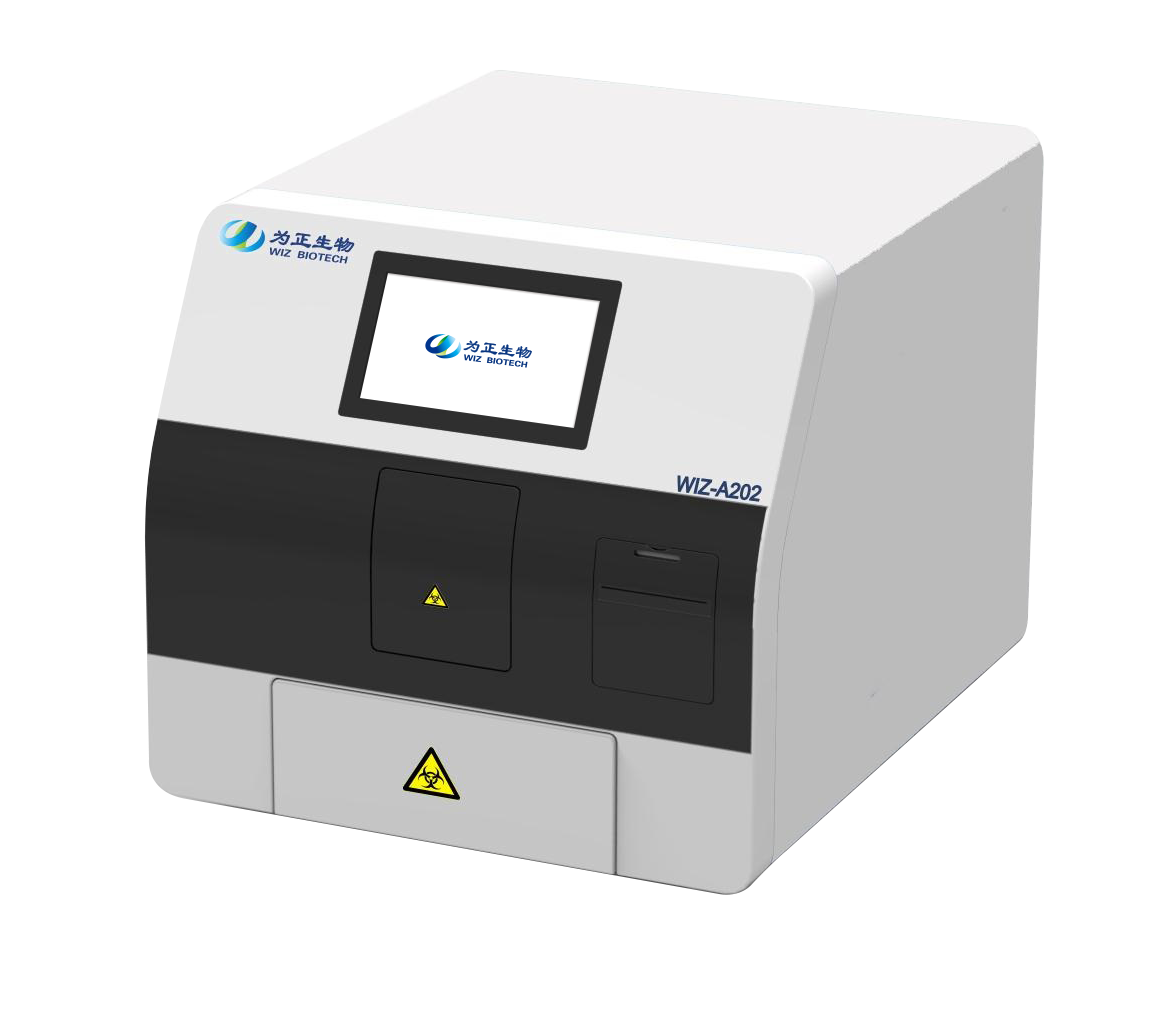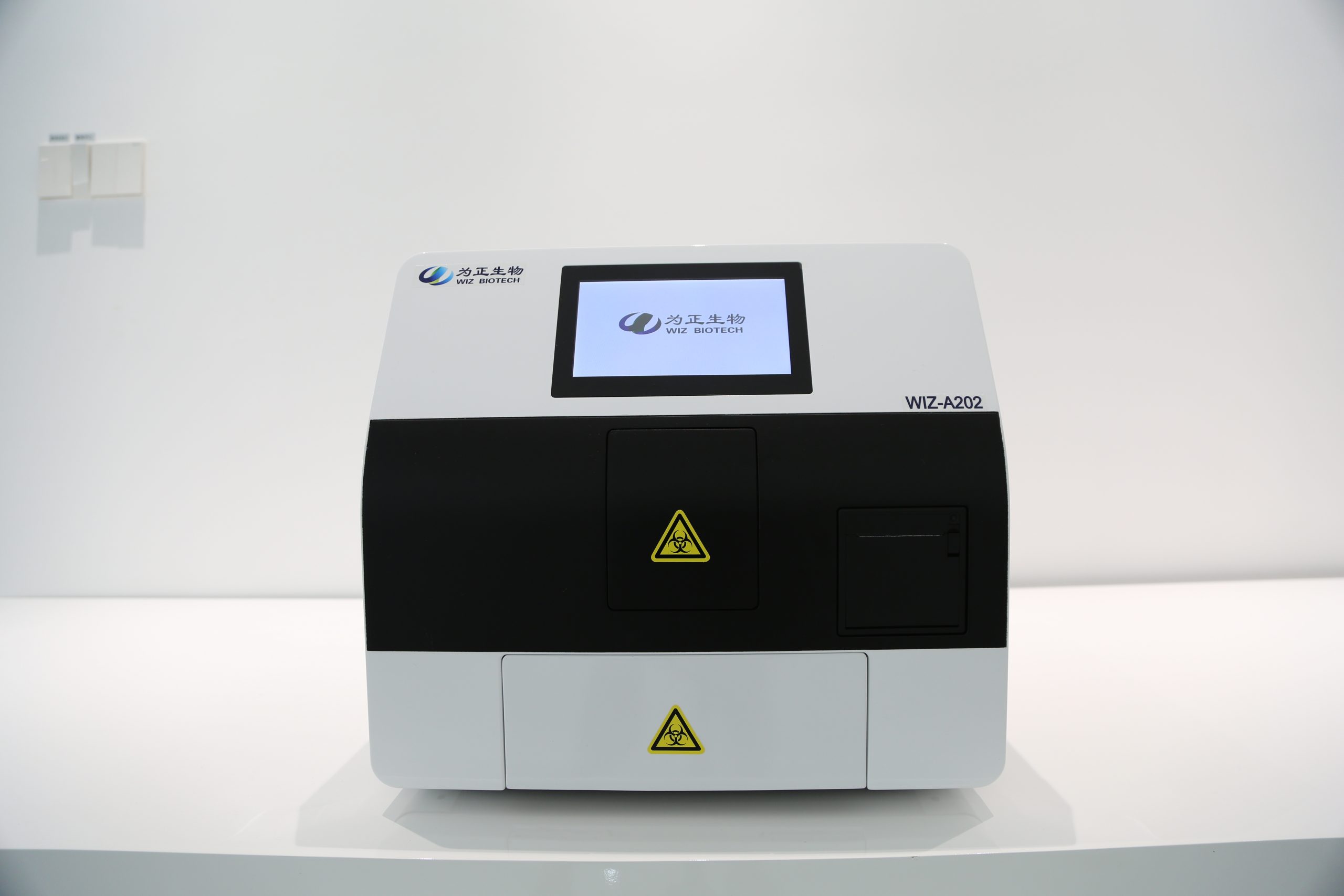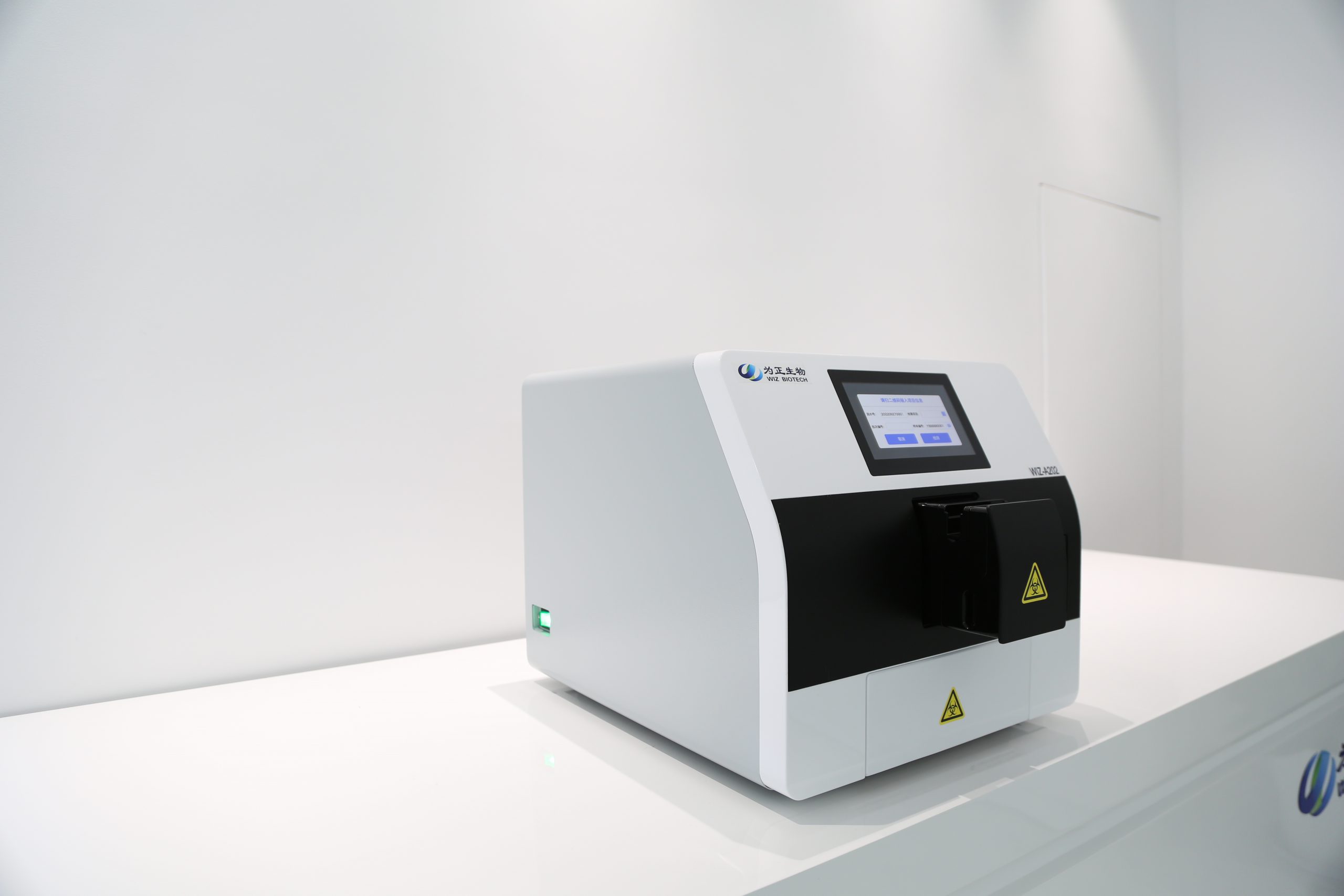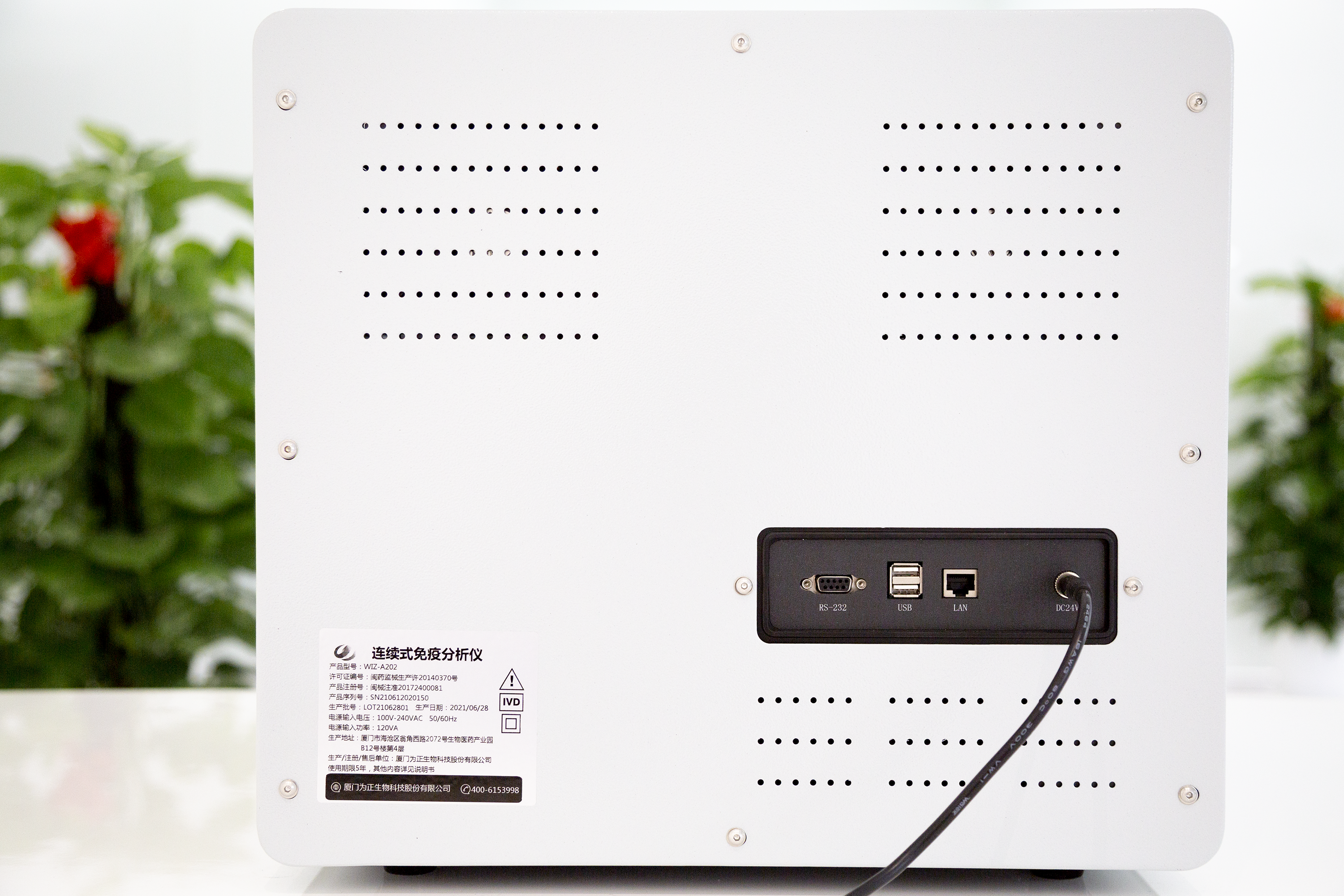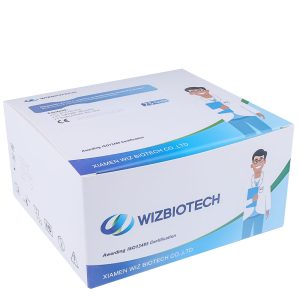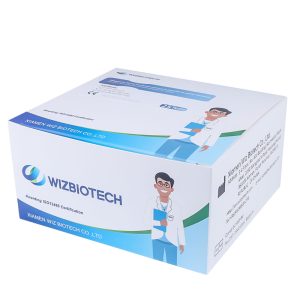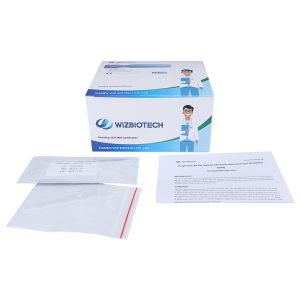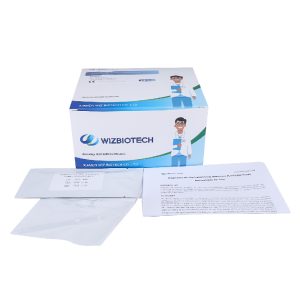Continuous Immunoassay Analyzer-WIZ-A202
The WIZ-A202 continuous immunoassay analyser (hereafter referred to as the analyser), the analyser analyser uses a photoelectric conversion system and immunoassay methods for the quantitative and qualitative
determination of various analytes in human serum, plasma and other body fluids. The analyser is based on the principles of colloidal gold, latex and fluorescence immunochromatographic imaging. Immunoanalyser.
Principle
(1) When a colloidal gold or latex reagent card is inserted into the analyser, the excitation light source is directed towards the detection and quality control zone of the card, which is collected and converted into an electrical signal. The intensity of light absorption is proportional to the concentration of the compound in the detection and quality control zone. The light absorption intensity is proportional to the concentration of the compound in the detection and quality control zone. The analyser calculates the signal according to an appropriate mathematical model for qualitative/semi-quantitative interpretation of the content of the analyte in the sample to be measured.2) When a fluorescent reagent card is inserted into the analyser, the excitation light source is directed towards the sample.2) When a fluorescent reagent card is inserted into the analyser, the excitation light source is applied to the detection and quality control zones of the card to excite the bound fluorescent immune complex.2) When a fluorescent reagent card is inserted into the analyser, the An excitation light source is applied to the detection and quality control areas of the reagent card to excite the bound fluorescent immunocomplex. The intensity of the electrical signal is concentration dependent and the analyser automatically calculates the number of immune complexes based on the scan signal and an appropriate mathematical model. The analyser automatically calculates the amount of analyte to be measured in the sample based on the appropriate mathematical model. The application-specific continuous immunoassay analyser is suitable for kits based on the principles of colloidal gold, latex and fluorescent immunochromatography for the qualitative or semi-quantitative analysis of colloidal gold and latex reagents and for the quantitative analysis of fluorescent immunochromatographic reagents.
Applications
Continuous immunoassay analyser for kits based on colloidal gold, latex and fluorescence immunochromatography principles for qualitative or semi-quantitative analysis of colloidal gold and latex reagents and quantitative analysis of fluorescence immunochromatography reagents.
Technical Specification
Size 51.8cm*44.2cm*41.5cm
Weight 30Kg
Host Input DC24V 5A
Power AC100~240V,50/60Hz
Adapter weight 0.36Kg
Data export Monitors / Printers
Power rating 120W
Application Scenarios
Hospitals: outpatient/emergency laboratories, subspecialty clinics, laboratory departments, medical examination centres, etc.
Primary care: health centres, community outpatient clinics and physician clinics
TEST MENU
1.Gastrointestinal Disease
2.Hormone
3.Myocardial Series
4.Inflammation
5.Respiratory Disease
6.Chronic Disease
7.Vitamin
There are 7 categories and 22 product reagents in total
Prinsip deteksi
The continuous immunoassay analyzer WIZ-A202 uses a photoelectric conversion system and immunoassay methods for the quantitative and qualitative detection of various analytes in human serum, plasma and other fluids, and is used with kits based on the principles of colloidal gold, latex and fluorescence immunochromatography
Features
All types of samples: serum, plasma, peripheral blood, venous blood, urine and faecal samples can be tested
Good compatibility with colloidal gold, latex and fluorescence immunochromatography assays
Biosafety: automatic collection of waste cards for easy disposal and further biosafety
Continuous sampling: multi-compartment incubator for uninterrupted sampling
Intelligent: intelligent recognition of assay items and methodologies
Data interoperability: supports hospital LIS system linkage
Related products
-
Fluorescent Immunoassay analyzer series
Diagnostic Kit for C-reactive protein / Serum Amyloid A Protein (Fluorescence Immunochromatographic Assay)
Read more -
Fluorescent Immunoassay analyzer series
Diagnostic Kit for Pro-brain Natriuretic Peptide to Amino-terminal (Fluorescence Immunochromatographic Assay)
Read more

